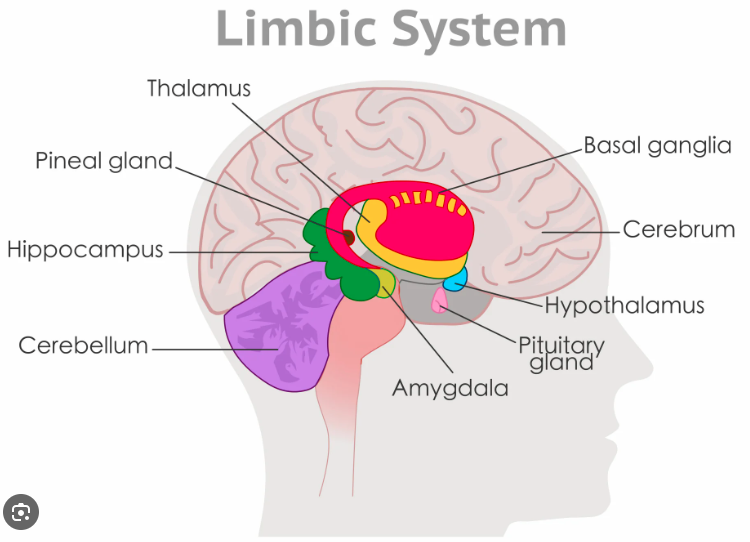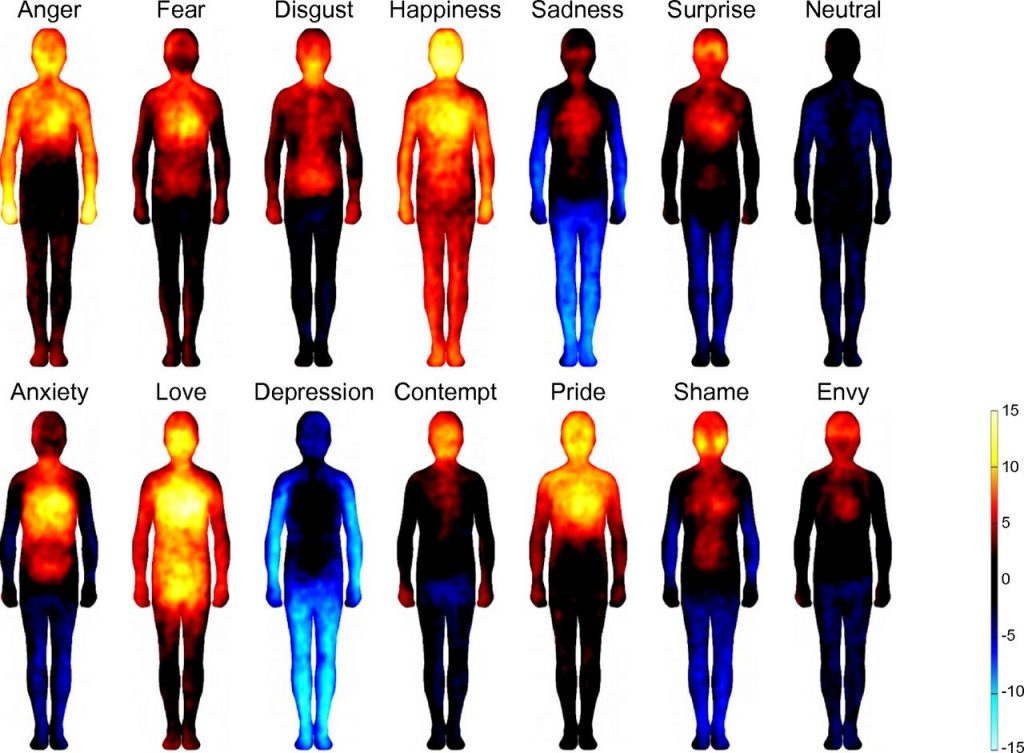
The mind-body connection is a concept which has developed in Western Modern Psychology since the 1800s. It refers to the relationship between how we think, how we feel and our physical health. It also states that this relationship does not just go one way. The mind influences the body and the body influences the mind. Eastern medicine has understood this relationship for far longer, the mind-body connection is the foundation of Chinese Medicine and Ayurveda which are systems of medicine that go back thousands of years.
How the concept of the mind-body connection has developed
In Psychology, it takes a long time for concepts such as the mind-body connection to develop. It is often the work of multiple psychologists who each contribute a slightly deeper understanding based on their scientific findings and or theories. To explore how concepts develop in psychology I have described the history of the mind-body connection below.
Although William James (1842 – 1910) was the first psychologist to highlight the interplay between mental and physical experiences, it was Sigmund Freud (1856 – 1939) who laid the foundation for the mind-body connection. Freud believed that repressed emotions could manifest as physical complaints which could then lead to illness and disease.
From here the theory was added to by Hans Selye (1907-1982) who researched the body’s response to stressors. He designed The General Adaptation System (GAS) which describes the body’s response to stress. Selye also noted that the body responds to stress in a similar pattern whether it has experienced physical, emotional or psychological stress.
It was Herbert Benson (1935 – present) who showed that deep relaxation techniques like meditation could counteract the body’s stress response. His research began to popularise mind-body techniques such as Mindfulness. Candace Pert’s (1946 – 2013) research advanced our understanding further by showing how our thoughts and feelings release chemicals called neuropeptides which influence the body’s reactions. Her research provided scientific evidence for the mind-body connection.
Finally, Bessel Van der Kolk (1943 – present) research focused on the mind-body connection and trauma. He showed how traumatic experiences can disrupt the brain’s normal functioning and he advocated for the importance of including somatic approaches to healing in trauma recovery. His book, The Body Keeps The Score is a good read if you want to find out more about the mind-body connection as it relates to trauma.
Criticism of the mind-body connection
Before we move on and explore this topic further I also want to highlight the main criticisms of the mind-body connection. There are always different opinions to account for in Psychology, as there are in every area of science.
One of the primary arguments is that the mind-body connection is an oversimplification of a very complicated system. Much of the research has focused on case study analysis which is subjective and for some scientists not a reliable source of data. Another criticism is that the placebo effect may account for some of the positive effects of mind-body treatments like Meditation, Mindfulness, Yoga and Tai Chi. Depsite these criticisms mind-body treatments have been widely adopted in Western Medicine and continue to show positive benefits for a huge range of people.
Emotions, the limbic system & the body
Wilder Penfield was the first neurologist to show the connection between the emotions and limbic system. The limbic system includes the hypothalamus, the pituitary gland and the amygdala and is one of the primary systems involved in the stress response. Wilder Penfield worked with awake participants and was able to replicate emotions such as grief and pain using electrodes which stimulated the limbic system. 1.

Further research by Candace Pert and her team was able to identify neuropeptides which are secreted from the brain and influence emotions. Not only have the team found neuropeptide receptors in the brain but also the body leading them to state that they have found evidence that the mind is not just located in the brain but in the entire body. The mind, which influences emotions, is separate from the brain and exists across the whole body. 2.
Mapping the emotions to the body
We all know intuitively that different emotions affect the body in different ways. When we feel negative emotions such as anger, grief and jealousy, the effects of these emotions are felt negatively in the body. Equally, positive emotions such as joy, excitement and love affect the body in positive ways. Research has now been able to map emotions and how they are represented in the body through imaging techniques.

The study involved a series of experiments, in one the experimenters asked participants to evaluate the bodily sensations associated with each emotion. A total of 773 individuals took part in the study and the body map of the emotions was the result. Warmer colours indicate an increase in sensation, cooler colours indicate a decrease in sensation. This research further highlights the importance of treating the mind & body for disorders such as anxiety and depression. 3.
How can working with the mind-body connection help us to heal?
Working with the mind-body connection can enhance therapeutic approaches. It is important to note that mind-body treatments are not a replacement for therapy. There are also some circumstances, such as if the person has experienced extreme trauma where studies have shown that mind-body treatments like mindfulness can hurt recovery.
Having said this, mind-body treatments such as mindfulness, tai chi & deep breathing techniques can reduce stress and help the individual to regulate their emotions. As we have already seen in the body mapping images, experiencing emotions such as Anxiety & Depression is a fully body experience. Mind body techniques help us to develop a better relationship with our body and the sensations that we experience as a result of our emotions. I’d like to give a concrete example about how this works in practice, so you can fully understand the power of mind-body healing techniques.
Mindfulness – A Mind-Body technique for healing
Mindfulness teaches the individual to notice sensations that arise in the body and to label those sensations. During Mindfulness the individual gets comfortable noticing the different sensations and is aware that sensations come and go over the course of the meditation. This helps the individual to feel in control when experiencing negative sensations such as anxiety because they have practiced being able to sit with and experience the sensation rather than run away from it. Whatsmore, mindfulness offers practices such as deep breathing which can help to calm and relax the body and reduce these sensations. Therefore, the individual is able to regulate their emotions.
Mind-body techniques are quite accessible and possible to practice without the help of a teacher once the techniques have been learnt. This can lead the individual to become empowered on their healing journey which can give them a sense of control of their wellbeing leading to further improvements over time.
Mind-body treatments can be a great compliment to therapy, and there are some psychotherapists and counsellors, including many on our team that incorporate mind-body treatments in their treatment plans. It is becoming more common for CBT therapists to also include mindfulness as part of their treatment plan, for example.
Resources to learn more about the mind-body connection
There are some great resources to learn more about the mind-body connection and different disciplines you can learn about which can help you to become more embodied and work with your emotions in this way.
- The Body Keeps the Score: Brain, Mind, and Body in the Healing of Trauma by Bessel van der Kolk
- Full Catastrophe Living: Using the Wisdom of Your Body and Mind to Face Stress, Pain, and Illness by Jon Kabat-Zinn
- Molecules of Emotion: The Science Behind Mind-Body Medicine by Candace Pert
- Insight Timer is a great app for learning Mindfulness & Meditation with a range of free guided practices.
If you are interested in exploring how the Mind-Body connection can help you on your healing journey, as a compliment to therapy we would love to hear from you. We have many practicing psycotherapists and counsellors who support this approach.
Reach out to us or book an introductory session.
References:
1. https://www.tandfonline.com/doi/abs/10.1080/0964704X.2019.1651135
2. https://candacepert.com/wp-content/uploads/2017/07/Advances-v8-1988-Wisdom-of-the-Receptors1.pdf
3. https://www.pnas.org/doi/full/10.1073/pnas.1321664111
